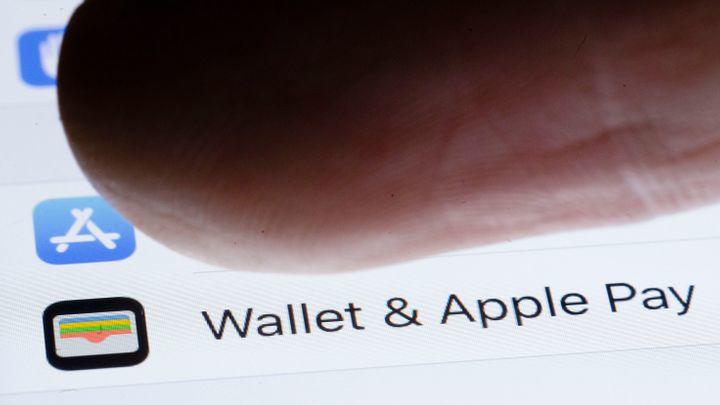
Even though you probably don’t have to worry about catching the coronavirus from touching cash, it certainly doesn’t hurt to avoid physical currency if possible. The same goes for handling your wallet and credit cards.
With several contactless payment options available, there’s really no need for many people to expose themselves to the coronavirus by touching these objects unnecessarily.
According to a survey by The Ascent, 55% of U.S. consumers are worried about handling cash, while about three-quarters of respondents said they plan to continue using contactless payments once the pandemic is over. Eighty percent of contactless payments are for transactions under $25, “a range usually dominated by cash,” according to the report.
“Contactless payment was growing in popularity even before the pandemic, but it’s clear that now, more than ever, consumers are eager to embrace any options that align with social distancing guidance,” said Anna Barker, a personal finance expert and founder of LogicalDollar. The benefits extend beyond health considerations, she added. “This method of payment has been shown to be far quicker than using a card or cash, mainly as it’s usually much easier to find your phone compared to digging around for a wallet.”
However, Baker noted that some apps are less widely accepted by retailers than others. “It’s also important to make sure that you understand the fees involved in paying contactlessly to avoid any unwelcome surprises that may not make it worthwhile to use this technology,” she said.
Best Apps For Contactless Payment
If you want to pay for items in stores without touching your wallet or cash, you have a couple of options. One is using a mobile wallet, which requires your device and the payment terminal to be within close proximity for the transaction to occur.
Mobile wallets, also called digital wallets, are apps for your smartphone that can store your credit and debit card information, allowing you to pay at checkout with just a tap, explained Greg Mahnken, an industry analyst for Credit Card Insider. “The biggest benefit to mobile wallets is that they effectively turn any debit or credit card into a contactless card,” he said. “Even if the card your bank gave you doesn’t have tap-to-pay, you can still keep checkout contactless by using the card on a mobile wallet.”
You can also use individual mobile payment apps, which can send and receive money from anywhere. Simply create an account and link a bank account, debit card or credit card to make payments.
Regardless of which you prefer, there’s a contactless payment app that fits your spending habits. Below is a look at eight popular options to choose from.
Google Pay
Google Pay, the mobile wallet app formerly known as Android Pay, allows Android users to pay for purchases using their phones anywhere that supports near field communication (NFC) payments. Users can also perform peer-to-peer transactions using Google Pay, as well as pay for in-app and online purchases.
Google Pay is accepted at almost all major retailers, and supports credit cards from most major issuers including American Express, Chase and Discover. If your card isn’t supported, you can link the app with your PayPal account instead, Barker said. “Just keep in mind that while debit card payments are free, credit payments incur a fee of 2.9%,” she added.
Apple Pay
Apple Pay, designed for Apple device users, is also one of the most popular mobile wallets used for contactless payment. You can use your phone or Apple watch to pay for purchases at NFC contactless payment terminals with Apple Pay, as well as use it for in-app and website purchases. “You also have the option of sending cash to other users using the app, which can be done by asking Siri or via an iMessage,” Barker said.
Apple Pay is relatively widely accepted, although not at as many retailers as Google Pay (you can search within Apple Maps for stores that accept it). While debit card payments are free, credit card transactions incur a 3% fee.
Samsung Pay
Samsung Pay is the third major player when it comes to mobile wallets. It works similarly to both Google and Apple Pay, but it’s meant to be used specifically by Samsung Galaxy owners (you have the option of using either Google Pay or Samsung Pay on your Galaxy, but must choose one as your default).
It can also be used at just about any payment location; in addition to NFC technology, Samsung employs magnetic secure transmission (MST) technology, allowing users to pay where traditional magnetic cards are swiped.
PayPal
In an effort to expand beyond its dominance of the online payment market, PayPal released its own contactless payment app. “However, while PayPal has always been strong on security, its app has been less widely embraced by retailers than the above-mentioned apps,” Barker said.
She added that the PayPal app is particularly useful for person-to-person transfers. These payments are free, as long as the money is coming from your PayPal account or a linked bank account. If you use a linked debit card, however, a fee is charged.
Venmo
The Venmo app allows you to send money to friends and family, as well as to make purchases at stores. “Much like PayPal, you can use funds you have stored in the app or use money from a card or account you have linked to the app,” said Freya Kuka, personal finance blogger and founder of Collecting Cents. There are no fees to send money unless you are using a credit card, in which case it costs 3% of the transaction amount.
Additionally, transfers from a user’s Venmo balance to their bank account usually takes about one to three days. If you want the money to hit the account instantly, you can pay $0.25.
Zelle
Zelle is a payment app that allows you to instantly transfer money to someone using their email or phone number. The person you send money to doesn’t have to have the Zelle app; all they need is a U.S. bank account to receive the money. However, if they don’t have the app, the transaction could take up to three business days to complete. It’s also possible to send money via your mobile banking app if Zelle is integrated. There are no fees to use the service.
“The only con with Zelle is that it cannot be used to make purchases at stores or online,” Kuka said. “It is strictly used to send money to people you already know or have some sort of relationship with since you will need their email address or phone number to make the transaction.”
Cash App (Square)
The Cash app, developed by mobile payments company Square, allows users to send peer-to-peer payments, make donations and even tip professionals. You need a phone number or email to create an account. You then link a debit or card and create a username (known as your “$Cashtag,” which allows you to send and request money with anonymity if that’s what you desire.
Debit transactions are free, while credit cards require a fee of 3%. The transaction limits are also lower than most other apps; you can send up to $250 within a 7-day period and receive up to $1,000 per 30-day period. You can increase those limits by adding more identity verification information, such as your Social Security number.
Facebook Messenger
Social media giant Facebook also got into the mobile payments game, allowing users to send and receive money through the Messenger app. To make a peer-to-peer payment, you need to start a message with the other person, select the option to send money, and choose your amount.
You need to have a debit card or PayPal account linked with Messenger to use this feature, and transfers can take up to three business days for banks to accept. For added security, you can also create a PIN.











